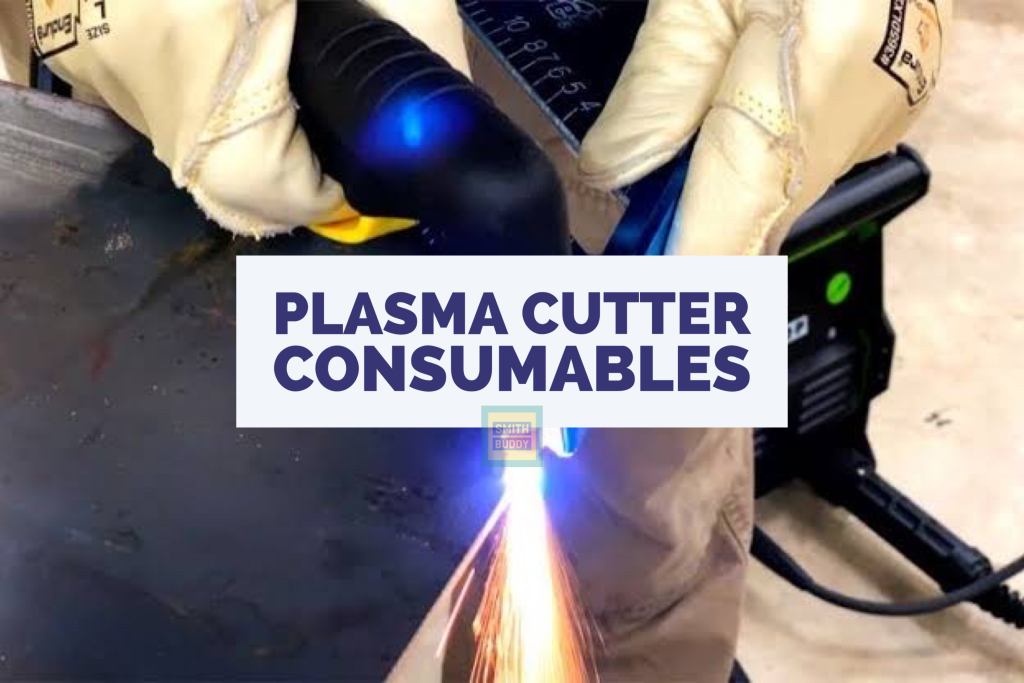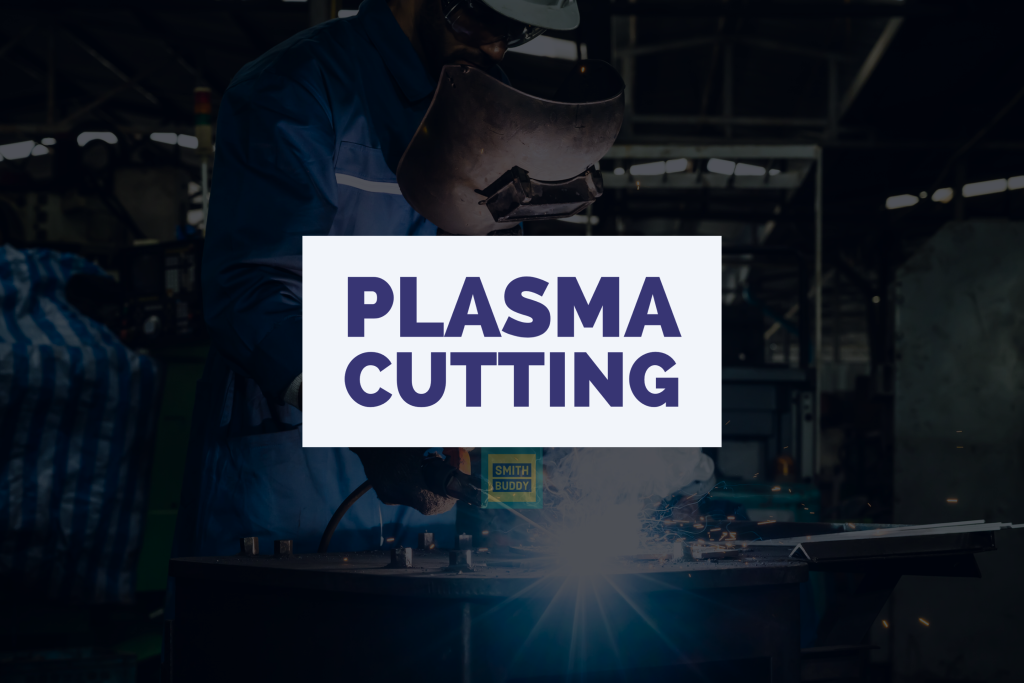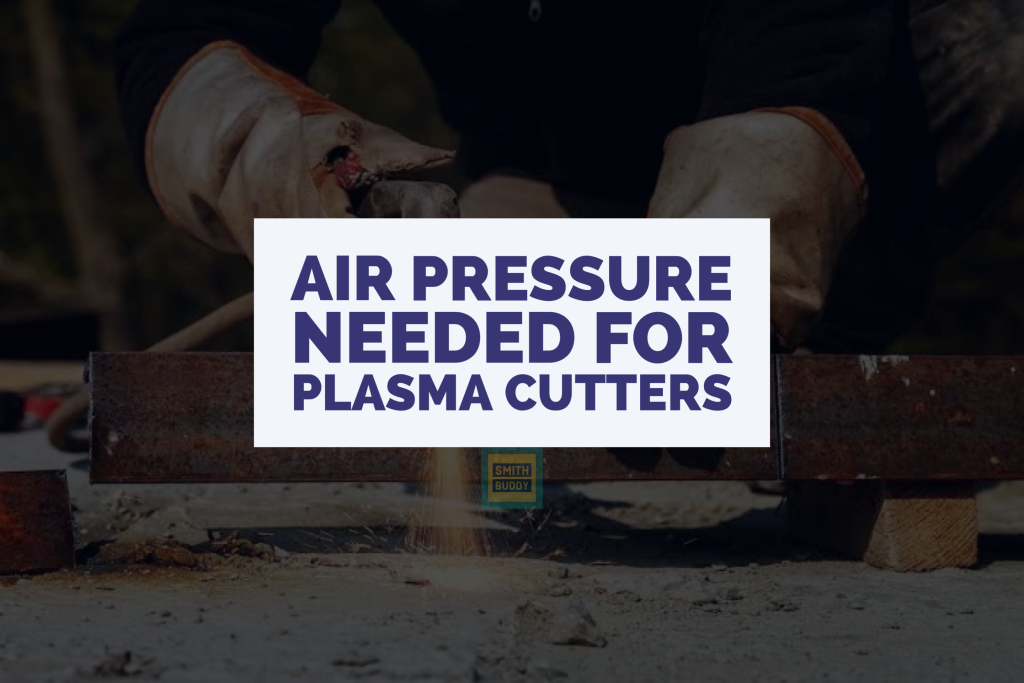Proper drag technique is essential to successful plasma cutting, and proper drag technique begins with the right set of tips. Using the right tips can greatly improve your cutting performance and reduce the risk of damage to your machine. Whether you are a novice or a professional, these tips will help you get the most out of your plasma cutter and make sure your cuts come out clean and precise.
This article intends to describe plasma cutter drag tips and & important aspects. Here’s a study on commonly faced problems of plasma cutters.
What is Plasma Cutting?
Plasma cutting is a process that uses a high–velocity stream of ionized gas to cut through electrically conductive materials such as metal. The process starts by creating an electric arc between an electrode inside a nozzle and the metal being cut.
The arc heats the gas to an extremely high temperature and creates an ionized gas known as plasma, which has the ability to cut through metal. This process is extremely accurate and efficient and is often used in metal fabrication, automotive repair, and other industrial applications.

What is plasma cutter drag tips?
Plasma cutter drag tips are tips that are designed to be used with plasma cutters and are made to reduce drag when cutting metal. The tips are angled, which helps the plasma arc to cut through the metal more smoothly and efficiently.
The tips also create a narrower arc, which helps reduce heat and warping as the metal is cut.
What is Nozzle that is used in Plasma Cutter?
A plasma cutter nozzle is a component of a plasma cutting system that helps to shape and focus the arc of the plasma stream. The nozzle is typically a copper fitting that is connected to the torch and channels the plasma stream to the desired area.
The nozzle also helps to improve cut quality, increase cutting speed, reduce heat input, and protect the operator from the intense heat of the arc.
Additionally, the nozzle helps to protect the consumable parts of the torch from the intense heat of the arc and the abrasive nature of the plasma stream.

Differences between drag tips and nozzle
A plasma cutter drag tip is a type of consumable electrode that is used in plasma cutting torches. It features a flat edge that allows the torch to ‘drag’ along a flat cutting surface, producing a consistent and straight cut. This type of consumable electrode is most often used for cutting sheet metal, but can also be used on thicker materials such as stainless steel.
A plasma cutter nozzle is a type of consumable electrode that is also used in plasma cutting torches. It is designed with a conical shape that produces a more focused and concentrated stream of plasma. This type of consumable electrode is best suited for precision cutting, such as cutting intricate shapes out of thin materials like aluminum and copper.
Are Plasma cutter drag tips & Nozzles universal?
Plasma cutter drag tips are not universal. Different types of plasma cutters require different types of drag tips. It is important to consult the manufacturer‘s instructions to determine the correct drag tip for your particular make and model of plasma cutter.
Plasma-cutting nozzles are not universal either. Different brands of plasma cutters may require different nozzles, and the type of nozzle may also depend on the type of material being cut.
When to replace plasma cutter drag tips?
Plasma cutter drag tips should be replaced when they become worn or damaged.
Worn drag tips can cause poor cutting performance and can even damage the plasma cutter. It is important to regularly inspect and replace drag tips as necessary to ensure optimal performance.
These are causes that make damage your drag tips:
- Improperly grounding the plasma cutter to the material being cut
- Using a plasma cutting tip with the wrong amperage
- Not replacing the consumables, such as electrodes and tips, regularly
- Excessive puddling of the metal when cutting
- Not allowing the plasma cutter to cool down between cuts
- Overheating of the electrodes due to prolonged use
- Not using a drag shield to protect the tip from the heat of the arc
- Not using proper safety gear when operating the plasma cutter
When to replace nozzles?
Plasma cutter nozzles should be replaced when the orifice on the nozzle has become worn. This can be observed by looking for signs of spatter and discoloration near the orifice.
Additionally, if the nozzle has been exposed to extreme heat, or has been in contact with an abrasive material, it should be replaced. A nozzle should also be replaced if the orifice size is no longer suitable for the material being cut.
Why do nozzles get damaged?
Well, these are the reasons presented below:
- Overheating: If the plasma cutter gets too hot, the nozzle can melt or warp due to excessive heat.
- Poor Maintenance: Not regularly cleaning or replacing the nozzle can cause damage from spatter and slag buildup.
- Incorrect Gas Flow: If the gas flow is incorrect, the plasma stream can be too strong for the nozzle and cause it to become damaged.
- Contamination: If the nozzle is exposed to dirt, dust, oil, or other contaminants, it can become clogged or corroded.
- Improper Cutting Technique: If the cutting speed is too slow or if the nozzle is too close to the material, it can cause the nozzle to become worn or damaged.
Plasma cutter maintenance tips
These are the plasma cutter maintenance tips that ensure bigger life for your cutting machine:
- Ensure that the air pressure and gas flow are properly set and checked frequently.
- Keep the nozzle and electrode clean, free of dirt and debris.
- Check for proper grounding of the workpiece and the torch.
- Make sure all electrical connections are secure and not corroded.
- Regularly inspect the cutting torch for any signs of wear and tear.
- Use the correct consumables and replace them when needed.
- Ensure that the water–cooling system is properly working and changed periodically.
- Clean the air filter regularly.
Which plasma-cutting consumables need frequent replacement?
The plasma–cutting consumables that need frequent replacement are the electrode, nozzle, and swirl ring. These are the parts that are subject to the most wear and tear during the plasma–cutting process.
Electrodes of plasma cutters can be damaged in a few different ways. The most common cause of damage is improper use or maintenance. For example, the electrode can be damaged if the cutter is run at too high of an amperage, not enough coolant is used, or the consumable parts are not replaced regularly. Additionally, if the electrode is not properly secured, it can come loose during operation and can be damaged by the arc. Other causes of electrode damage include excessive exposure to heat, vibration, or debris.
Swirl rings of plasma cutters can be damaged in a few different ways. The most common is from physical damage such as drops, bumps, or even from normal wear and tear. The swirl ring can also be damaged by the heat and pressure of the plasma stream. This can cause the swirl ring to become warped, cracked, or simply worn down. If a swirl ring is damaged, it will not be able to produce an optimal plasma arc and can lead to poor-quality cuts.
Read about our 10 plasma-cutting tips and get ready for the next.
Common mistakes while using drag tips and nozzle
Below are the common mistakes we every day with plasma cutters which ultimately destroy the drag tip and nozzle.
- Not changing the nozzle and drag tip regularly
- Not properly pre–heating the metal
- Not properly grounding the material 4. Not allowing enough travel speed
- Not maintaining a consistent distance between the torch head and the metal
- Not keeping the torch angle consistent
- Using the wrong size nozzle or drag tip 8. Cutting too deep
- Not using appropriate protective equipment
- Not properly preparing the work surface
How to choose the right drag tip & nozzle size?
When choosing the right drag tip size for a plasma cutter, it is important to consider the thickness of the material that you plan to cut. Generally speaking, the thicker the material, the larger the drag tip size should be. You should also consider the amperage of the plasma cutter as this will determine the maximum thickness the machine can handle. If possible, try to use the manufacturer’s recommended drag tip size for the material you plan to cut.
While choosing the nozzle, follow these tips for better help:
- Consider the material thickness and type that you will be cutting. The thicker and harder the material, the larger the nozzle size.
- Consider the amperage of your plasma cutter. The higher the amperage, the larger the nozzle size you‘ll need.
- Make sure the nozzle size is compatible with your plasma cutter. Most plasma cutters come with a recommended nozzle size.
- Consider the speed of your plasma cutter. Faster cut speeds require larger nozzle sizes.
- Consider the type of cut you are making. Long, straight cuts typically require larger nozzle sizes.
- Consider the type of shield cup you are using. Shield cups with larger openings require larger nozzle sizes.
Final Thought
Overall, proper nozzle and drag tip usage are essential for the proper operation of a plasma cutter. By selecting the right tip for the material being cut and maintaining them properly, the plasma cutter will cut efficiently and accurately.
Additionally, using proper technique and avoiding contact with the workpiece will help extend the life of the tips. With regular maintenance and proper usage, the nozzle and drag tips will provide reliable cutting performance for many years.





